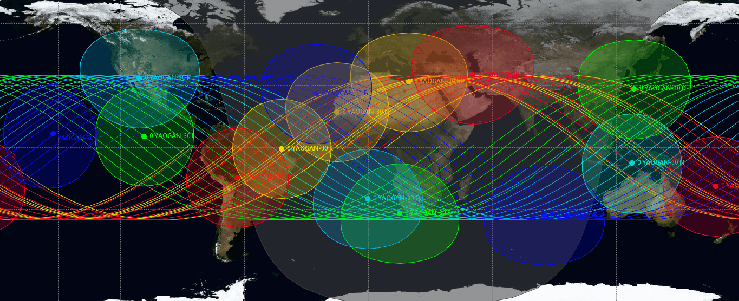This article initially appeared on eastpendulum.com, a French-language blog about the Chinese military and aerospace industry
A few years ago, I wrote about the Yaogan-30 constellation, which is made out of Chinese military satellites in Low Earth Orbit. By then, it had two groups of three satellites each, with the second group still having to reach its final orbit. Nevertheless, there was enough information to predict that the final constellation would be made out of at least three groups, positioned in order to maximize revisit over China’s “near abroad”. This, along with the pictures released by the Chinese government, hinted at a constellation of signal intelligence satellites.
New launches have taken place, and in addition to the small update in the original article, here is a more in-depth analysis of the new developments:
China has added not one, but three new groups of three satellites. The first group, called Yaogan-30-03, has been launched into a third orbital plane, as expected, to complete the constellation with three planes 120° apart at 35° inclination:

The second new group, Yaogan-30-04, has not been put into a new plane but has been inserted in the same plane as -03, with the three new satellites being positioned at regular intervals between two of their -03 brothers. This configuration creates an orbital “train” of satellites following each other, allowing the system to continuously collect information during around forty minutes for places located around 35°N (the latitude of Tokyo for instance). For these location, the train offers five to six such 40-minute passes each day.

This uninterrupted coverage probably has military applications, and the Chinese forces will likely prefer to conduct offensive operations when it is available.
The third and last new group, Yaogan-30-05, has reached a new orbital plane, also at 35° inclination. Consequently, the constellation currently has 4 planes and 15 satellites.

Here is an animated ground track of the constellation:
Conclusion
China has reinforced its Yaogan-30 system beyond expectations, and now has an more extensive ability to watch over its neighbours. The constellation might still evolve: adding two new groups of three satellites in the same orbital planes as -03 and -04 would create an uninterrupted coverage for eight to nine hours at a time for the latitudes of interest. For a truly persistent coverage, the same would have to be applied to two of the other planes by adding them nine satellites each, for a total of thirty-nine satellites for the full constellation. Consequently, the next CZ-2C launches for Xichang Space Center will have to be watched closely, rumours indicating a -06 group might be launched in 2020.



[…] A more in-depth analysis is available there. […]
LikeLike
[…] project (some more details). China already has a military smallsat constellation on orbit, called Yaogan-30, with already 18 satellites, presumably for electronic […]
LikeLike
[…] with the first satellites launched in 2017. It is probably an ELINT constellation. I dedicated separate articles to […]
LikeLike
[…] Chinese Yaogan-30 constellation has already been the topic of two previous articles, but this one is probably the last: with the launch of the seventh trio of satellites, the […]
LikeLike